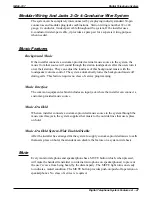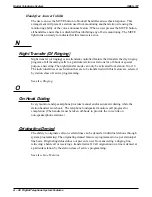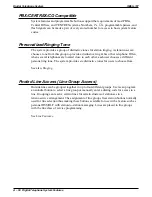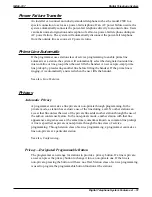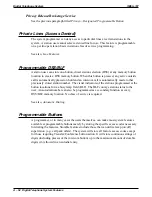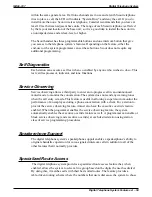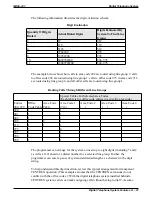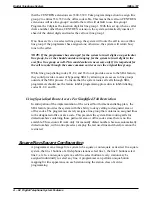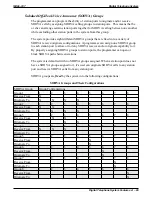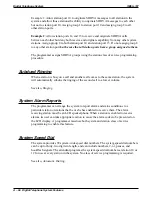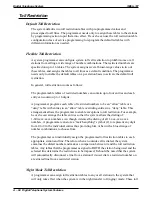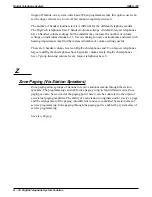
a line group after comparing the dialed number with entries that are contained in an
office code table, an area code table, and four special area code look-up tables.
The specialized route access operates in the following manner: When the caller presses
INTERCOM and dials 9 or presses a preprogrammed button, the system returns a special
dial tone. The caller then has 10 seconds in which to dial some digits; otherwise, the
telephone will return to its idle state. Once a caller begins to dial digits, he or she has a
certain period of time in which to dial each new digit. The system programmer selects
this time-out period through programming. After the caller has stopped dialing digits and
the end of the time-out period has occurred, the system analyzes the dialed digits and
routes the call by following the table-driven routing scheme depending upon how the
programmer has arranged the system.
The system routes calls based on comparison matches between the dialed number and the
entries that it finds in either an office code table, an area code table, or four special tables
for selected area codes. These tables contain 1000 entries from 000 to 999 and the
programmer can assign one line group to each entry; therefore, a routing match is always
possible.
The system matches dialed digits with table entries in the following manner:
•
If the first digit that the caller dials is not a 1 or a 0, and if he or she dials less than
10 digits (such as : nnn-nnnn), the system evaluates the first three digits as an office
code, searches for the office code in the office code table, and finds a line group.
•
If the first digit is either a 1 or a 0 (such as: n-nnn-nnnn), the system ignores the
first digit and evaluates the next three digits as an office code, searches for the
office code in the office code table, and finds a line group,
•
If the first digit that the caller dials is neither a 1 nor a 0, and if he or she dials 10
digits or more (such as nnn-nnn-nnnn), the system evaluates the first three digits as
an area code and the following three digits as an office code.
•
If the first digit that the caller dials is either a 1 or a 0 (such as n-nnn-nnn-nnnn),
the system ignores the first digit, evaluates the next three digits as an area code, and
evaluates the following three digits as an office code.
•
After digit evaluation the system routes the call as per the following discussion: If
there is a special table that matches the dialed area code, the system searches that
table for the dialed office code and finds a line group. If there is not a special table
for that area code, the system just searches the area code table for it and finds a line
group.
Digital Telephone System
IMI66–107
A – 60 Digital Telephone System Features
Summary of Contents for Air Impact DSU
Page 2: ...Printed in U S A GCA47 157 ...
Page 30: ......
Page 112: ......
Page 192: ...Digital Telephone System IMI66 107 3 80 System Programming ...
Page 283: ......
Page 284: ......
Page 285: ......
Page 286: ......
Page 287: ......
Page 288: ......
Page 289: ......
Page 290: ......
Page 291: ......
Page 292: ......
Page 293: ......
Page 294: ......
Page 295: ......
Page 296: ......
Page 297: ......
Page 298: ......
Page 299: ......
Page 300: ......
Page 301: ......
Page 302: ......
Page 303: ......
Page 304: ......
Page 305: ......
Page 306: ......
Page 307: ......
Page 308: ......
Page 309: ......
Page 310: ......
Page 311: ......
Page 312: ......
Page 313: ......
Page 314: ......
Page 315: ......
Page 316: ......
Page 317: ......
Page 318: ......
Page 319: ......
Page 320: ......
Page 321: ......
Page 322: ......
Page 323: ......
Page 324: ......
Page 325: ......
Page 326: ......
Page 327: ......
Page 328: ......
Page 329: ......
Page 330: ......
Page 331: ......
Page 332: ......
Page 333: ......
Page 334: ......
Page 335: ......
Page 336: ......
Page 337: ......
Page 338: ......
Page 339: ......
Page 340: ......
Page 431: ......
Page 436: ......
Page 437: ......
Page 438: ......


